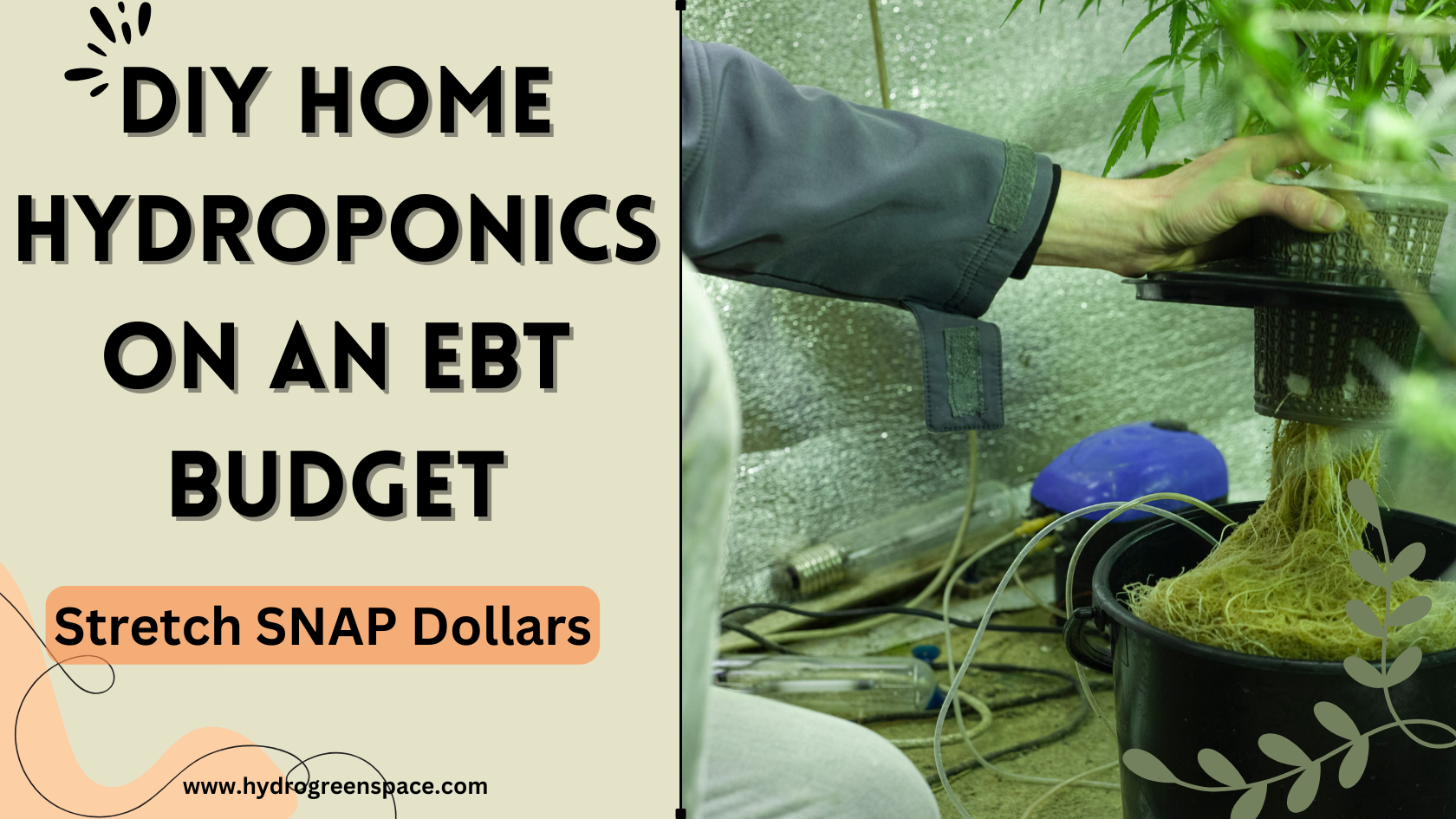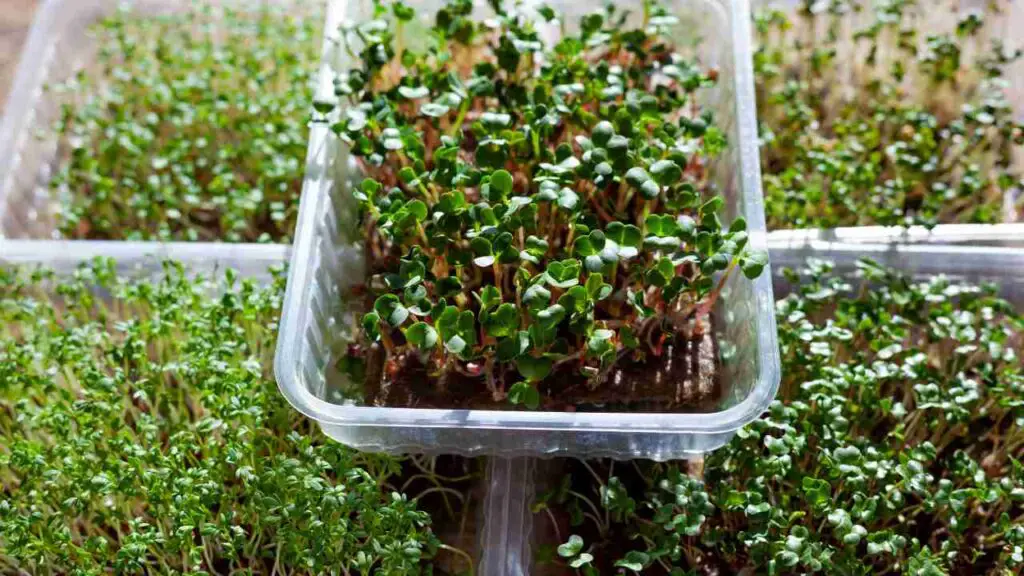Stretch SNAP Dollars: DIY Home Hydroponics on an EBT Budget

As an avid hydroponic gardener living in a crowded urban area, I’m constantly seeking ways to maximize my limited space to grow fresh, healthy produce.
For years, I had successfully set up multiple compact hydroponic systems in my small apartment to supply my family with leafy greens, herbs, tomatoes, and more. However, a recent stretch of hardship forced me to rely on food stamps to provide for my family.
Though I was grateful for the EBT benefits, I worried whether I could still afford the nutrients, grow lights, and replacements needed to sustain my garden.
That’s when I made it my mission to find ways to purchase as many components as possible under the EBT program.
With some creative thinking and commitment to make this work no matter what, I experimented with different DIY setups using the most affordable supplies I could get with my benefits. I also researched and found certain online hydroponic shops and local gardening stores that accepted EBT for eligible purchases.
It took some persistence and sacrifices, but continuing my indoor gardening ultimately paid off – both in terms of providing food and maintaining my sanity during the difficult time.
The experience opened my eyes to how hydroponic gardening can be an empowering solution for EBT households who otherwise have limited access to fresh produce. With the right information and resources, families reliant on food stamps can enjoy the benefits of self-sufficient gardening. This includes nutritious food, cost savings, sustainability, and educational value for children.
That knowledge motivated me to help others in similar positions, by sharing everything I learned about setting up a rewarding hydroponic garden within the constraints of an EBT budget.

Table of Contents
What are EBT-Eligible Hydroponic Systems?
EBT stands for Electronic Benefits Transfer, which is the system used to provide SNAP benefits (also known as food stamps) to eligible households. While EBT benefits cannot be used to purchase prepared foods, they can be used to buy seeds, plants, and certain gardening supplies.
This means that with proper planning, EBT budgets can be utilized to set up simple hydroponic systems to grow fresh produce indoors. Here are some examples of EBT-eligible hydroponic supplies:
- Containers – plastic bins, buckets, and kiddie pools for deep water culture
- Growing media – perlite, vermiculite, coconut coir, clay pellets
- Nutrient solutions – liquid plant foods and minerals
- Seeds and seedlings – for lettuce, herbs, tomatoes, etc.
- Grow lights – CFL or LED lamps for indoor growth
- Air pumps – for water aeration and circulation
- Tubing – for irrigation and nutrition delivery
The great thing about hydroponic gardening is that it allows you to maximize yield in a limited space, without relying on soil and natural sunlight. As long as you have some essential components, you can grow vegetables, fruits, and herbs indoors, on tables, or in vertical spaces year-round!
Benefits of Having an Indoor Hydroponic Garden for EBT Households
Growing your own food hydroponically with an EBT budget has many excellent benefits:
Fresh, Nutritious Produce Year-Round
- Grow vegetables and greens that are full of vitamins and minerals
- Avoid produce that loses nutrition through long transport and storage
- Have access to homegrown goodness even when seasonal produce is expensive
Saves Money on Groceries
- Reduce grocery bills by growing your own food
- Reap the rewards of a small initial investment into a hydroponic system
- Cut costs by recycling materials and nutrients when possible
Educational and Fun for Kids
- Engage children by getting them involved in gardening
- Teach them about plant science and self-sufficiency
- Enjoy tasty, fresh treats like cherry tomatoes and sugar snap peas
Self-Sufficiency and Sustainability
- Take pride in powering your garden with your own energy
- Reduce waste by reusing materials for your setup
- Attain a high level of food security through self-reliance
Having an indoor hydroponic system can empower EBT households to take control of their food production in an eco-friendly manner. The benefits go far beyond just saving money on groceries. Learning to cultivate your own sustainable garden is a valuable life skill and a great family project!
Getting Started with a Simple and Affordable EBT-Eligible System
When starting a hydroponic garden with an EBT budget, the key is to be resourceful and minimize costs without sacrificing functionality. Follow these steps to put together a straightforward system for beginners:
Choose Your Grow Area Select a space that gets some indirect sunlight and has access to electrical outlets. This could be a corner in your living room, balcony, basement, or any unused area. Ensure it is near a sink to easily fill/drain your reservoir.
Pick Your Plants
Start with easy greens that grow quickly like lettuces, spinach, kale, herbs, and greens. This ensures harvests as a newbie while you get the hang of hydroponics.
Use Household Items
Repurpose plastic containers, buckets, or bins as your reservoir. Cut plastic bottles for net pots. Use old tubing, funnels, and jugs for irrigation. Check second-hand stores for cheap pots and pumps.
DIY Your Hydroponic System
Simple systems like Kratky jars or deep water culture with air pumps are beginner-friendly and budget-conscious. Set them up with your repurposed household items.
Purchase EBT-Eligible Supplies
Get seedlings, a growing medium like perlite, and liquid nutrients from hydroponic stores that accept EBT. Look for cheap grow lights and timers on Amazon through SNAP.
Adapt and Upgrade Gradually
Tweak your system to improve yield. Upgrade to more energy-efficient LEDs when possible. Add nutrients or compatible plants as you gain experience.
Making mistakes is part of the learning process. Start small and simple, then scale up. With a bit of creativity and resourcefulness, you can assemble an indoor garden to yield tasty, nutritious produce on an EBT budget!
Where to Purchase EBT-Eligible Hydroponic Components
When starting a hydroponic garden with EBT benefits, you need to find retailers that accept SNAP payments for eligible gardening supplies. Here are some options to look into:
Local Hydroponic and Garden Stores
- Call ahead and specifically ask if they accept EBT for products like:
- Seeds, seedlings, cuttings
- Growing media like perlite, vermiculite, coconut coir
- Nutrient solutions
- Containers like pots, buckets, pool liners
- Pumps, air stones, tubing
- Some independent stores allow EBT for a broader range of supplies than chains.
Online Retailers
- Amazon accepts EBT/SNAP online for seeds, plants, planters, and hydroponic additives.
- Smaller specialty stores like GroBot and Growers House also take EBT online for certain eligible items.
- Review benefits policies on retailer websites before ordering to confirm.
Discount and Second-Hand Sources
- Check Craigslist and Facebook Marketplace for discounted used hydroponic supplies.
- Garage sales can be great sources for finding containers and lighting cheap.
- Thrift stores may have helpful items like air pumps, timers, and extension cords.
- Hardware stores are good for basic components like tubing and containers.
Getting creative and buying used where possible will help stretch your EBT gardening budget further. With some hunting, you can find retailers that can supply your essential hydroponic system components at an affordable price.
Optimizing and Expanding Your EBT Hydroponic Garden
Once you have a basic hydroponic setup going with your EBT-funded supplies, you can start optimizing and expanding your system over time:
- Gradually upgrade to more energy-efficient full spectrum LED grow lights to maximize fruit and vegetable growth and save on electricity costs.
- Experiment with different hydroponic techniques that suit your space and plant types, like Kratky, deep water culture, nutrient film technique, etc.
- Introduce some intermediate plants like tomatoes, peppers, and cucumbers for more variety and nutritional diversity.
- Try vertical gardening methods like hanging shelves or hydroponic towers to multiply your growing area.
- Reuse and recycle as much as possible – collect rainwater for your reservoir, compost plant waste, reuse growing medium, etc.
- Learn to create your own nutrient solutions instead of relying on premade liquid nutrients from the store.
- Connect with other EBT hydroponic gardeners online to exchange knowledge, supplies, and harvest!
The options are endless when optimizing an indoor garden. Start by picking one or two methods at a time as you gain experience. The goal is to sustainably maximize the use of your limited EBT funds to expand productivity, variety, and enjoyment!
Overcoming Challenges with an EBT-Eligible System
When building and managing your indoor hydroponic garden on a budget, you may encounter some common challenges:
Limited Space
- Opt for compact hydroponic methods like Kratky jars or vertical towers.
- Prioritize easily stackable or hanging systems.
- Use walls, corners, and multi-tiered shelves to maximize footprint.
Nutrient Imbalances
- Carefully monitor pH and EC levels using affordable meters.
- Adjust nutrient solutions gradually and one at a time.
- Flush systems regularly to prevent imbalances.
Equipment Failures
- Invest in the best quality components you can afford.
- Learn DIY repairs and maintenance for pumps, lights, etc.
- Have backup air pumps and timers to avoid system crashes.
Algae and Mold
- Use opaque containers or paint reservoirs to block light.
- Ensure lids are secure and water is aerated.
- Sanitize the system between growth cycles.
Beginner Mistakes
- Start small to limit any losses as you learn.
- Consult online communities and troubleshooting guides.
- Stick to resilient, fast-growing plants while gaining experience.
With creative solutions and perseverance, the challenges of limited budgets and space can be overcome. Take it step-by-step and continue optimizing your hydroponic garden over time.
Starting an indoor hydroponic garden can seem intimidating to EBT households with limited resources. However, with research and commitment, it is possible to assemble effective hydroponic systems using budget-friendly supplies purchased with SNAP benefits.
The benefits of enjoying homegrown, hyperlocal produce year-round make the effort worthwhile. Not only does it provide access to nutritious food, but also empowerment through self-sufficiency, education for children, and environmental sustainability.
Begin with simple, DIY setups focused on easily grown greens and herbs. Upgrade components gradually as you gain experience. Seek fellow EBT gardeners online for advice, resources, and community along your journey.
With some creativity and perseverance, you can take control over your food production, even in the smallest living space and on the most constrained budget. Indoor hydroponic gardening can be an enriching and cost-effective solution for EBT households everywhere.
The possibilities are endless once you get growing! Share your knowledge to help others succeed in building their own space-saving, budget-friendly hydroponic systems.


Where can I get one of these with ebt?
Hi Chrissy,
You can get it in local stores or through online platforms like Amazon. I have updated the article with more information that you can refer to now. Please let me know if you have any questions.